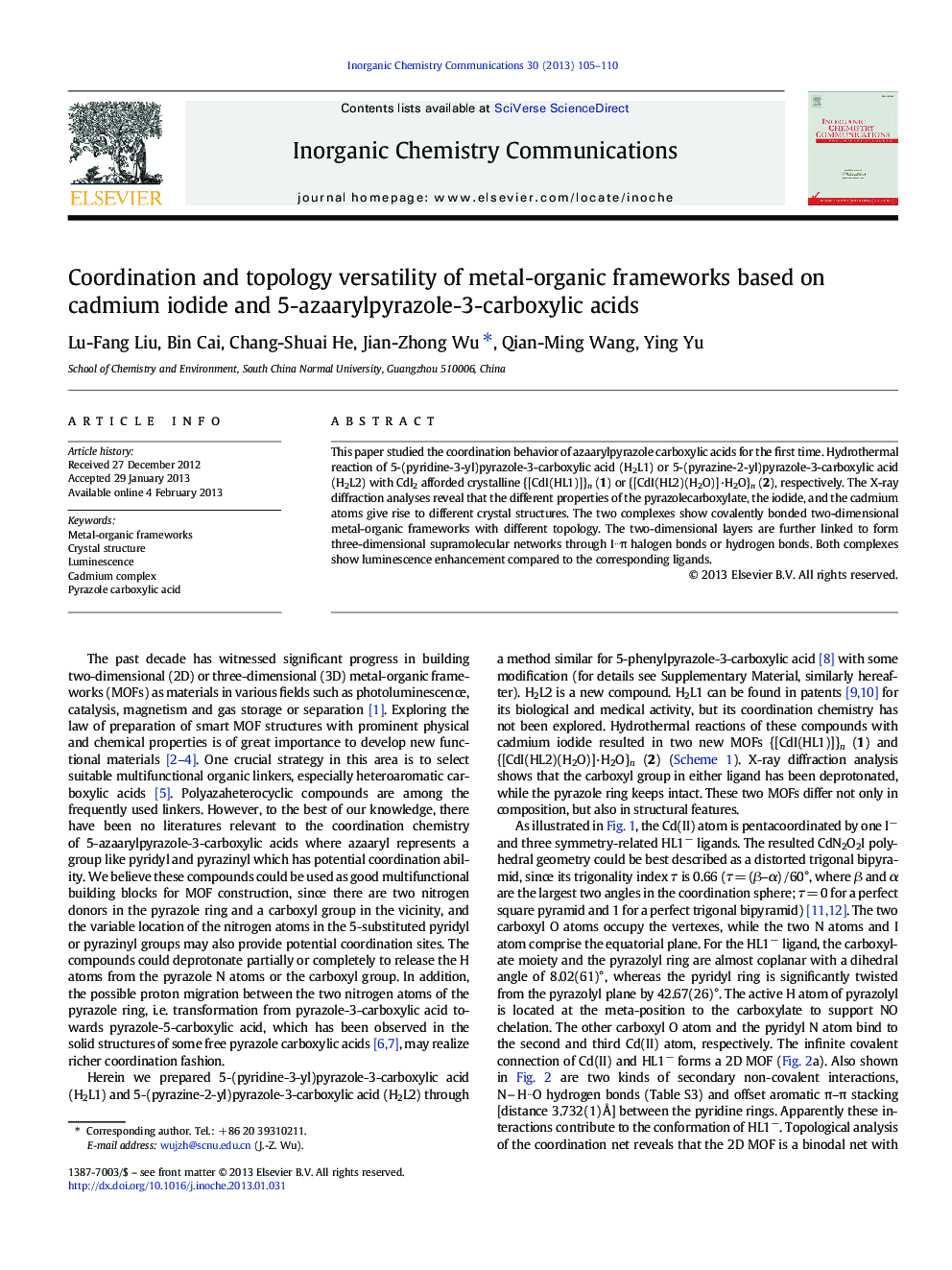| Article ID | Journal | Published Year | Pages | File Type |
|---|---|---|---|---|
| 1301991 | Inorganic Chemistry Communications | 2013 | 6 Pages |
This paper studied the coordination behavior of azaarylpyrazole carboxylic acids for the first time. Hydrothermal reaction of 5-(pyridine-3-yl)pyrazole-3-carboxylic acid (H2L1) or 5-(pyrazine-2-yl)pyrazole-3-carboxylic acid (H2L2) with CdI2 afforded crystalline {[CdI(HL1)]}n (1) or {[CdI(HL2)(H2O)]·H2O}n (2), respectively. The X-ray diffraction analyses reveal that the different properties of the pyrazolecarboxylate, the iodide, and the cadmium atoms give rise to different crystal structures. The two complexes show covalently bonded two-dimensional metal-organic frameworks with different topology. The two-dimensional layers are further linked to form three-dimensional supramolecular networks through I⋯π halogen bonds or hydrogen bonds. Both complexes show luminescence enhancement compared to the corresponding ligands.
Graphical abstractIn the two 2D MOFs formed by cadmium iodide and 5-(pyridine-3-yl)pyrazole-3-carboxylic acid or 5-(pyrazine-2-yl)pyrazole-3-carboxylic acid, the pyridyl and pyrazinyl substituents lead to different coordination modes of the pyrazolecarboxylate and iodine ligands, to different coordination metal sphere and topological network in the MOFs.Figure optionsDownload full-size imageDownload as PowerPoint slideHighlights► Metal ligation of azaarylpyrazole carboxylic acids was studied for the first time. ► Two 2D MOFs were obtained containing Cd, I and azaarylpyrazole carboxylates. ► Coordination behavior of the corresponding components are different. ► Ligation enhanced I⋯π halogen bond is found to exsist in one of the two MOFs. ► Both MOFs enhanced luminescence compared to the free pyrazole carboxylic acids.
